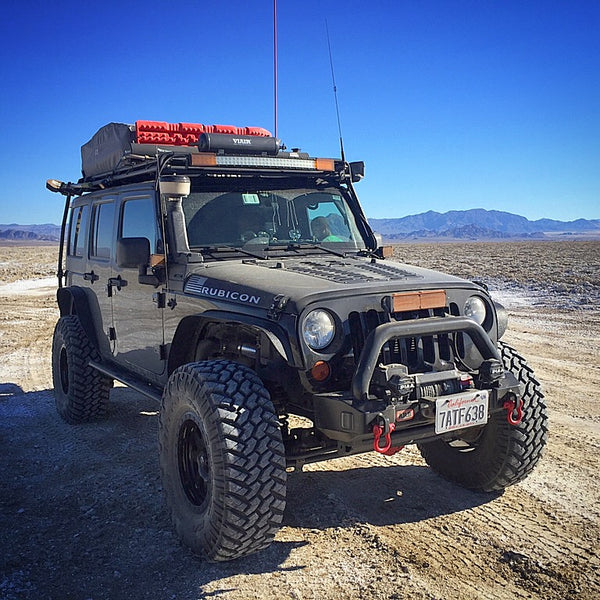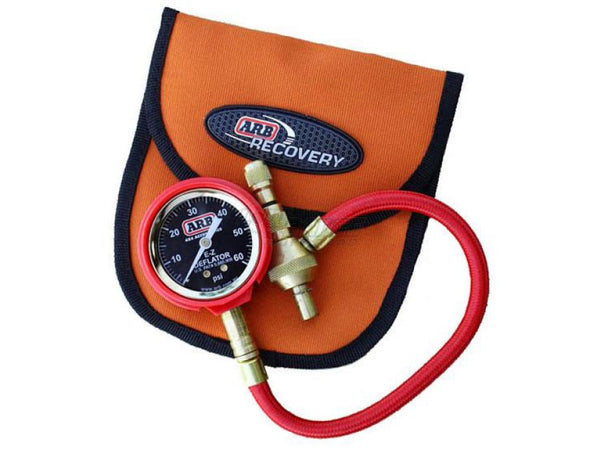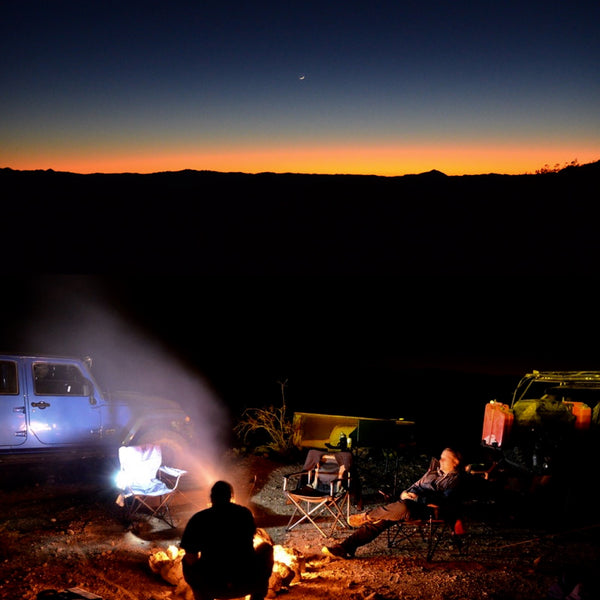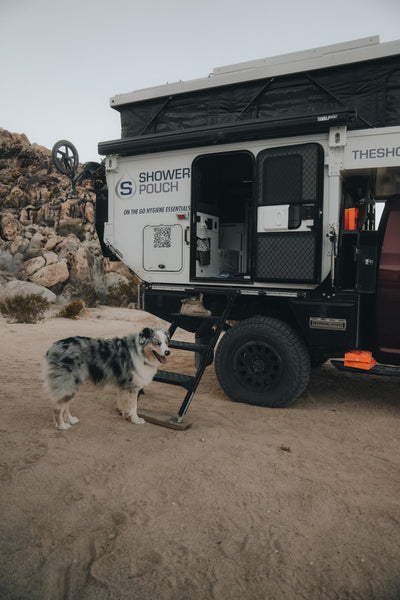I remember the day like it was yesterday. I bought my first four door Jeep Rubicon 6 years ago. At the time I thought offroading was like a Jeep commercial. Jump in your rig and find some random trail. How wrong I was! My very first weekend I took the stock jeep out with my wife and randomly searched online for an “off road” trail. At the first glance of a “dirt trail”, I took it.
What I drove on wasn’t an OHV trail, it was a fire trail road. It wasn’t just any fire trail, it was a fire trail that followed along a cliff. Similar to this old school photo below. After our near death experience, I decided that I would seek professional counseling when trying to learn more about this hobby. In particular, how to be safe.

Today I’m an active member of an offroad club called Southern California Off Road Explorers. The members are extremely knowledgeable and willing to teach newbies how to successfully prepare for all the elements and situations that may occur on the trail. I’ve not only learned how to properly off road, but I’m continuously trying to sharpen my skills. You’ll learn, the more you learn the more you don’t know. It’s not required to be in an off road club, but I highly recommend joining one. It’s a lot more fun going into this hobby with other like minded people who are just as passionate and possibly more knowledgeable than yourself. Below, I’m going to capture the most basic offroad principles so you are safe and have a plan to make it back home safely.
At all cost, do not go on a trail by yourself
If something happens to you on the trail, what is your backup plan to get back home safely? Going alone is not wise. At a minimum, it is recommended to have at least two rigs go out together.
Plan your route in advanced
Whether you are doing a day trip or plan to be out for multiple days, plan your trip out. It’s not uncommon to use an off road GPS app that’s specific for being on unpaved roads. I am currently using Gaia GPS on my apple iPad. Gaia GPS integrates the best topo maps, offline navigation tools and planning features. Since my apple iPad does not have a built in GPS beacon, I’m using a Bad Elf beacon. Between the Gaia app and the GPS beacon, I can plan out my adventure and share my route with my friends as a kmz file via email. It’s always wise to have a paper copy. There are plenty of books that takes the guess work out of planning a trip. One of my favorite books for off roading is a book called, Guide to California Backroads & 4-Wheel-Drive Trails. There are plenty of other books out there that is specific to your geographical needs. Familiarize yourself with a compass if you plan to use a paper map. Lastly, SHARE and OVER COMMUNICATE with your friends and family where you are going and when you plan to be back.
Shower
If a mounted water tank or toting gallons of water inside your rig isn’t an option, I recommend using a product called SHOWER POUCH. It’s a 2' x 1' full body wet wipe. Between the three scents of Bamboo, Unscented and Bamboo you’ll feel cool and shower fresh after each use. The formula is pH balanced and is derived from vegan ingredients. Shower Pouch is providing a special discount code specifically for the offroad community. Use discount code “OFFROAD” at checkout and receive a 15% discount from your first purchase.

Back in the day, the only option for a wet wipe product were Baby Wipes. We are all adults, it’s time we buy a product that is designed for us and our unique needs.
If you have the setup to bring water on the trail, I recommend checking out this 5 or 8 gallon water tank from Road Shower. Pictured below, I’ve mounted my Road Shower on top of my Gobi Rack. A solar water bag like the Coleman Camp Shower is another option. From my experience, you have to be very delicate because these bags are susceptible to leaking.

Airing Down & Airing Up
Airing down your tires before getting on a trail allows for greater traction and a smoother ride. I typically drop my air pressure to 12 psi. This psi value could be different for you. It depends on the weight of the vehicle, the type of rim (e.g bed locks), tire and how you plan to ride. There is a point of diminishing return once you go too low on the psi to increase traction and the tires propensity to slip off the rim. I use an ARB tire deflator. This deflator pulls the stem from the tire, resulting in a quicker deflate time.
After you finish the trail and it's time to get back to civilization, you'll need to air up. If you can't access a near by gas station, you should have an air compressor in your rig. Having an onboard air compressor like the ARB CKMTA12 is super convenient but they can be costly. Having a portable one isn't bad either. Smitty Bilt makes a good quality cost effective compressor.



Your vehicle (rig) should be safe and be set up for the trails you plan to tackle
Common sense stuff, make sure all your fluids are up to par. This should include your oil, differential oil, coolant, brake, power steering and etc. Visually inspect your rig to make sure it is safe for the trail. There is no harm in taking your rig into the shop before you leave for the trail.
A good practice is to bring an extra bottle of motor oil and some basic tools. You never know when you may have to wrench under your rig if something goes “boom” on the trail. It will be a fine balance between bringing your entire tool set from the garage and gathering enough tools to handle the essential needs.
It’s not required to have a 4x4 vehicle to go off roading, but it is highly advised. A 4x4 can help you better maneuver gnarly transitions and obstacles. You must know the capabilities of your rig and make sure it matches the challenges that you will face while on the trail.
Safety Equipment
Safety is fundamentally the corner stone for off roading. Having the basic safety equipment can get you out of many challenging situations. You should have the following equipment stored away in your rig: a tow rope (with a tow weight capacity that can pull your entire rig and some), snatch block, Hi Lift Jack, D rings, tree assist tow rope, a winch that is rated for your vehicle weight, a weighted mat to suppress the winch line in the event it breaks and gloves. In this blog I will not go into teaching you how to use all this equipment. Research how to use each tool before using them.


Communication
When you are on the trail, there is a high likelihood that you will not have cell phone service. The most popular piece of off roading equipment when it comes to communication are CB radios. These are awesome tools for communicating when the rigs you are speaking with are in line of site. However, when you need to transmit very far distances, I highly recommend purchasing a mobile HAM radio. My favorite brand is Yaesu. Not only can you communicate further away than a CB radio, you can also transmit to a repeater that can broadcast your communication hundreds and sometimes thousands of miles away. The better your communication range, the better chances you’ll have to get help if you really need it. Personally, I have both CB and HAM radios in my rig. If you want to use a HAM Radio you’ll need to get your license through the FCC. Pictured below is my setup for comms (bottom center) and navigation.

Tent Camping
On the ground tents are most common. I recommend choosing a tent that is right sized for the number of people sleeping in it. Excessive size tents can be a disadvantage since it will take up more space inside your rig and in extremely cold conditions, the heat gathered inside the tent will collect towards the top of the tent - furthest away from your body. I’ve learned after many nights of camping, the one piece of material that will extend the life of a tent is a tarp that you can purchase at your local Home Depot store. Place the tarp on the ground before setting up your tent. The tarp will protect you from rocks and sharp debris that could cut into the base of your tent.
Having a reliable sleeping bag is essential. Make sure it is rated for the temperatures you will experience on the trail. I personally own a spring/summer sleeping bag and a fall/winter sleeping bag.
Food/Beverages
Before we talk about food. You need to have a reliable cooler that will keep your perishables and non perishables cool. I don’t own this cooler but I plan to buy it soon. It’s called Yeti. They are built like a tank! For many day trips on the trail, I’ve learned a little trick. Buy one small block of dry ice from your local grocery store and place it to the bottom of your cooler. On top of the dry ice and depending on the size of the cooler, add bags of ice on top. Add the food contents where you see pleased. If this too complicated you can always buy a plug in refrigerator like the ARB Fridge for ~$700.00. Running it to a secondary battery would be wise since you don't want to kill your primary battery.

Take the Right Line & Be Safe
When approaching a large rock or a dug out rut from the past rainstorm, you MUST think about how your vehicle will respond when it approaches the obstacle. The rule of thumb is this:
- Go around the obstacle if possible
- Go over the obstacle with your tires. Don’t allow the obstacle to potentially damage the undercarriage of your rig (e.g. oil pan, drive shaft, control arms, gas tank and etc.)
- Straddle ruts vs. putting your tire in it. This can result in your rig high centering or possibly flipping.
Pictured below is what will happen when you don’t take the right line and the second photo is the proper way to take the line when a rut is in your path.


Taking the right line is very important, but approaching your trail at the safe speed is just as important. Off roading isn’t about who finishes the trail first. Take your time and enjoy being on 4 wheels. You’ll have plenty of time to speed on a paved road later.
Be Courteous
Off Road Lights - It blows my mind how affordable off road lights have become. Because of this there are more and more rigs with +50” light bars. It’s super fun to drive with your light bar on when you think no one is around. However, you must be mindful that these lights can BLIND a rig closely approaching your “light tower” of terror. The best rule of thumb is to only use the amount of light needed so you can judge the trail ahead of you. Think about off road lights like your high beam when you are on a paved road. Only turn them on when you really need to see further out.

Going up hill - When a rig is going down hill and a rig is going up hill on the same trail, give the rig going uphill the right of way.
Passing a group of off road rigs / ATVs / dirt bikes - It’s customary that one group will pull to the side. The group that is passing will use hand gestures to signal how many rigs are behind them. For example, if there are 5 people in my group and I’m the first rig to pass. I’ll show 4 fingers to everyone I’m passing. The person behind me would show 3 fingers … so on and so forth. The last person passing would show a closed fist. A closed fist represents "no one is behind me".

Have Fun
Off Roading aka Froader aka Overlanding aka Desert rat aka Mudder aka Boondocker are all terms that describe those who love to explore the majestic lands we call home. The most important rule to this hobby is to just have fun! Become one with nature and your rig and you’ll discover why thousands of people become off roaders for life. Don't forget to bring the wood for a camp fire, a harmonica and a bottle of whisky to pass around :)

Note - I have not went into specifics for any of the general topics I shared above. In future blogs, I'll write a deeper detail for each activity.





















